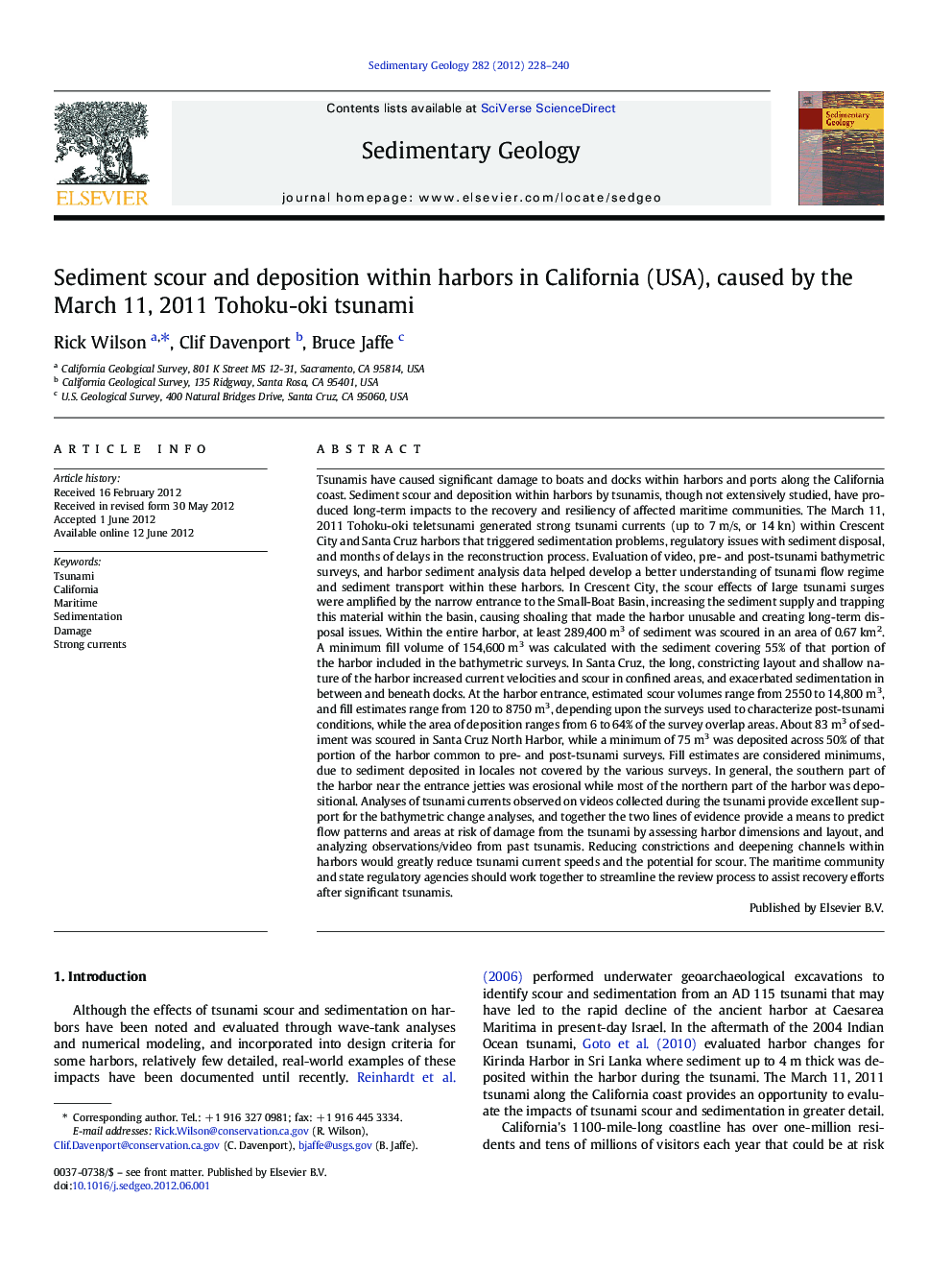| کد مقاله | کد نشریه | سال انتشار | مقاله انگلیسی | نسخه تمام متن |
|---|---|---|---|---|
| 4689630 | 1636079 | 2012 | 13 صفحه PDF | دانلود رایگان |

Tsunamis have caused significant damage to boats and docks within harbors and ports along the California coast. Sediment scour and deposition within harbors by tsunamis, though not extensively studied, have produced long-term impacts to the recovery and resiliency of affected maritime communities. The March 11, 2011 Tohoku-oki teletsunami generated strong tsunami currents (up to 7 m/s, or 14 kn) within Crescent City and Santa Cruz harbors that triggered sedimentation problems, regulatory issues with sediment disposal, and months of delays in the reconstruction process. Evaluation of video, pre- and post-tsunami bathymetric surveys, and harbor sediment analysis data helped develop a better understanding of tsunami flow regime and sediment transport within these harbors. In Crescent City, the scour effects of large tsunami surges were amplified by the narrow entrance to the Small-Boat Basin, increasing the sediment supply and trapping this material within the basin, causing shoaling that made the harbor unusable and creating long-term disposal issues. Within the entire harbor, at least 289,400 m3 of sediment was scoured in an area of 0.67 km2. A minimum fill volume of 154,600 m3 was calculated with the sediment covering 55% of that portion of the harbor included in the bathymetric surveys. In Santa Cruz, the long, constricting layout and shallow nature of the harbor increased current velocities and scour in confined areas, and exacerbated sedimentation in between and beneath docks. At the harbor entrance, estimated scour volumes range from 2550 to 14,800 m3, and fill estimates range from 120 to 8750 m3, depending upon the surveys used to characterize post-tsunami conditions, while the area of deposition ranges from 6 to 64% of the survey overlap areas. About 83 m3 of sediment was scoured in Santa Cruz North Harbor, while a minimum of 75 m3 was deposited across 50% of that portion of the harbor common to pre- and post-tsunami surveys. Fill estimates are considered minimums, due to sediment deposited in locales not covered by the various surveys. In general, the southern part of the harbor near the entrance jetties was erosional while most of the northern part of the harbor was depositional. Analyses of tsunami currents observed on videos collected during the tsunami provide excellent support for the bathymetric change analyses, and together the two lines of evidence provide a means to predict flow patterns and areas at risk of damage from the tsunami by assessing harbor dimensions and layout, and analyzing observations/video from past tsunamis. Reducing constrictions and deepening channels within harbors would greatly reduce tsunami current speeds and the potential for scour. The maritime community and state regulatory agencies should work together to streamline the review process to assist recovery efforts after significant tsunamis.
Journal: Sedimentary Geology - Volume 282, 30 December 2012, Pages 228–240